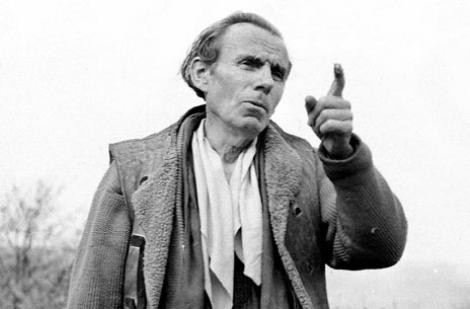
Ex: http://www.lepetitcelinien.com
L'analyse faite par Céline de la situation sociale est, nous avons pu le constater, extrêmement sombre, et la critique qui l'accompagne très virulente; A l'ampleur des récriminations devrait logiquement correspondre d'importants projets de réforme. Ce n'est pas le cas. Le « programme » socialiste de Céline est un ensemble assez confus de propositions diverses, qui prennent souvent la forme d'aspirations idéalisées présentées un peu au hasard, et qui ne sont ni appuyées par une démonstration rigoureuse, ni assorties de précisions, ce qu'on ne peut manquer de regretter. Cette disproportion est fréquente chez les pamphlétaires et tout spécialement chez les polémistes des années 30. Deux directions se distinguent dans le programme socialiste de Céline. Elles donnent la réplique aux procès intentés au communisme et au matérialisme. C'est d'une part l'égalitarisme et le communisme « Labiche», d'autre part, le spiritualisme.
L'égalitarisme et le communisme « Labiche »
Dans une interview, accordé en 1941 à Claude Jamet, Céline prononçait cette phrase qui devait servir de titre à un article paru peu après : « L'égalitarisme ou la mort ». Il l'annonçait ainsi, expliquant qu'il s'agissait d'une solution apportée aux maux dénoncés du communisme:
« Contre le jazz, il n'y a que le jazz hot... On ne renversera le communisme qu'en le dépassant, en en faisant plus... Contre la communisme, je ne vois rien que la Révolution, mais alors là, pardon ! La vraie ! Surcommunisme1 ! »
Déjà, dans Bagatelles pour un massacre Céline avait affirmé sa vocation égalitariste. Il disait avoir découvert très jeune l'inégalité sociale, constatait qu'il avait toujours eu des besoins matériels modestes, et se tenait prêt au garde à vous, « le plus grand partageux qu'on aura jamais connu ».
Tant qu'on a pas tout donné, on n'a rien donné, poursuivait-il, et « Débrouillard » doit être supprimé en même temps que « Crédit »
C'est dans Les Beaux draps qu'il précise son égalitarisme. L'avènement de la justice sociale absolue est la première étape de la rénovation de la société. « Tant qu'on a pas ouvert Pognon », rien de sérieux ne peut être entrepris. Ce sera la « Révolution moyenneuse », programme ambitieux et brutale que Céline envisage ainsi : Un salaire national identique pour tous, qui varie entre 50 frs salaire minimum et 100 frs salaire maximum par jour. Un semblable maximum de 100 frs est prévu pour les rentes et les revenus. Le surplus passe à l'Etat. Un aménagement familial complète le système : accroissement progressif du salaire en fonction du nombre d'enfants avec un maximum de 300 frs par jour pour les familles nombreuses. Céline avait ici à l'esprit la crise de natalité qui sévissait en France, Egalité absolue pour tous, dictateur, génie ou terrassier, égalité physiologique, devant la faim et le besoin, telle est la première et necessaire condition à l'avènement de la justice sociale. Un tel programme est brutal et ne manquera pas de soulever des protestations, Céline prévoit celles de l'« Elite », terme vague, englobant ceux qui assuement des responsabilités de direction et commandement. L'élite s'insurge, trouve que les « 100 frs » ne conviennent pas à son nécessaire prestige, qu'il est insensé qu'un Directeur des Chemins de fer soit plus médiocrement salarié que son lampiste lorsque ce dernier est père de famille nombreuse. Mais l'élite c'est l'exemple, et Céline poursuit :
« C'est là qu'on va voir ce que ça pèse non dans les mots, mais dans les faits l'amour de la France... l'enfiévrante passion du bien général... le culte patriote... le désintéressement sacré... les plus hautes cimes d'abnégation... Ah ! ça va être un bon moment ! » (Les Beaux draps, p. 181)
Après ce « bon moment », et sur ces bases égalitaristes, Céline établit son communisme « Labiche ».
Le communisme « Labiche » c'est un communisme petit bourgeois, c'est-à-dire adapté à l'homme et à ses aspirations fondamentales, telles que les conçoit l'écrivain fondées tout spécialement sur le besoin de sécurité. Dans ce système tout le monde sera petit propriétaire : pavillon et jardin de 500 mètres, transmissibles héréditairement et assurés contre les risques et l'accaparement. Le problème de la sécurité est un des soucis majeurs des Français, dont 90 sur 100 rêvent d'« être et de mourir fonctionnaire ». Céline admet cette préoccupation élémentaire, car constate-t-il ironiquement :
« C'est toujours des douillets nantis, des fils bien dotés d'archevêques qui vous parlent des beautés de l'angoisse. » (Les Beaux draps, p. 140)
Sans qu'il développe cette idée Céline paraît souhaiter l'établissement d'un système de Sécurité sociale très poussé, protégeant contre le maximum de risques en particulier ceux de chômage, maladie et vieillesse.
Pour assurer la sécurité de l'emploi et le fonctionnement de son régime de salaire national unique, il préconise des mesures d'inspiration communiste : nationalisation des banques, mines, chemins de fer, assurances, grands magasins, industries..., kolkozification de l'agriculture. Il pense supprimer ainsi le chômage et s'intéresse encore aux paresseux qu'il met en prison, aux malades qu'il soigne, et aux poètes, qu'il occupe à faire des dessins animés aptes à relever le niveau des âmes.
Dans un chapitre des Beaux draps, Céline pose la question du nombre d'heures de travail à imposer à l'ouvrier. Ironisant sur les « jeunes redresseurs », qui pleins de bonne foi parmi leurs statistiques invoquent le travail salut, le travail fétiche et remède de la France, il leur oppose les « pas abstraits », ceux qui vont « trimer la chose ». L'usine est un mal nécessaire qu'il faut accepter mais sans le dissimuler sous de flatteuses descriptions. 35 heures de travail lui semblent alors le maximum que puisse supporter un homme, ouvrier d'usine ou employé de magasin, qui doit affronter le bavardage des clientes « aussi casse crâne qu'une essoreuse broyeuse à bennes ».
Tel se présente le communisme « Labiche » de Céline : répartition égalitaire des biens, aménagement du travail, des loisirs, de l'habitation en vue de satisfaire aux besoins de sécurité et petit confort dont l'écrivain imagine l'homme avide. Comment apprécier un tel programme ? Il est aisé, et la plupart des commentateurs de Céline ont fait ce choix, de sourire avec indulgence aux errances de l'auteur turbulent devenu rêveur naïf et, avec en exergue les poètes occupés à faire des dessins animés, de ranger ce communisme « Labiche » parmi les utopies inoffensives et désuètes. S'il ne convient certes pas d'ôter à ces propositions leur caractère de simples esquisses ou ébauches et si l'on doit regretter le silence de l'écrivain quant aux modalités d'application et aux possibilités de réalisation de son programme, il convient aussi de mettre en valeur un aspect habituellement négligé de ce système : le communisme « Labiche » est révolutionnaire. C'est une coupure nette et brutale avec le système social en vigueur, un bouleversement de l'organisation économique, une mutation profonde des rapports sociaux. Nationalisation, kolkozification, salaire unique, le socialisme de Céline va, sur tous ces problèmes au delà du communisme, l'application d'un tel programme se voulant immédiate, et l'écrivain se disant prêt pour sa part. Sous des apparences anodines, le communisme « Labiche » est en réalité « explosif ». Mis en pratique, il se rapprocherait plus de la révolution permanente chinoise que du communisme soviétique. Mais il s'accompagne de recherches spiritualistes, assorties de propositions qui le transforment très sensiblement.
Le spiritualisme
Le programme, auquel nous avons donné cette qualification très générale de « spiritualisme », consiste en l'ébauche des solutions proposées aux maux dénoncés du matérialisme. Le portrait type d'un Céline rustre, grossier, haineux, avide, acharné destructeur, subit une métamorphose. Le calculateur s'avère naïf, le nihiliste se perd en vastes projets, le haineux devient homme de foi. Il fait sienne la belle maxime de Gaston Bachelard : « Rendre heureuse l'imagination2 ». Ces aspirations idéalistes font de lui à la fois un homme du passé et un visionnaire. Le passé se confond pour lui avec le Moyen Âge, siècle de foi, et cet appel à une tradition ancienne a lui-même une signification révolutionnaire selon la démonstration de Peguy. La vision c'est celle du douloureux prophète de la faillite du matérialisme et de l'homme-robot, qui tente de leur opposer la renaissance spiritualiste des assoiffés d'idéal.
Le programme spiritualiste est exposé dans Les Beaux draps. La rénovation spirituelle y est entreprise à partir de deux institutions : la famille et l'école.
Céline constate avec amertume la crise de la natalité que traverse la France : « L'entrain à la vie n'existe plus. » Il ironise sur le Code de la famille, que le décret-loi du 29 juillet 1939 venait d'instaurer, le traite d'« éthique et chafoin », « code de ratatinés discutailleux préservatifs ». Il s'emporte contre les « décrets de pudeur », inspirés, dit-il, par la richissime maîtresse d'un président du conseil. Tout ceci n'est que tartufferies, le programme familial de Céline est beaucoup plus ambitieux. Il s'agit en somme de recréer la France à partir de la notion de famille. Toutes les familles de France seront réunies en une seule avec « égalité de ressources, de droit, de fraternité ».
Le salaire national unique permettra l'égalité des ressources et l'avènement de la respectabilité dans un pays :
« où y aura plus du tout de bâtards, de cendrillons, de poil de carotte, de bagnes d'enfants, "d'Assistance", où la soupe serait la même pour tous. » (Les Beaux draps, p. 152)
Programme noble et généreux, difficile à mettre en pratique, les exigences et les espoirs de Céline ne semblent pas connaître de limites ; le prouvent bien ses propos sur la fraternité et l'altruisme absolu qu'il voudrait voir régner entre les familles. Il faut, précise-t-il, que les enfants des autres vous deviennent presque aussi chers que vos propres enfants. Le grand bouleversement social s'analyse en un avènement de « papas et mamans partout ». L'espérance d'un tel altruisme, d'une telle communion entre les hommes, est réellement surprenante sous le plume de Céline, une telle candeur naïve surprend. Les Beaux draps datent de 1941, et l'introduction du « familialisme » dans la politique était à la mode avec Vichy. Céline sans doute s'en inspirait, le laisserait penser cette phrase, qu'il ne précise d'ailleurs pas :
« une seule famille, un seul papa dictateur et respecté » (Les Beaux draps, p. 152)
Il s'attarde plus longuement sur la question scolaire. Dans Bagatelles pour un massacre il s'était déjà livré à de violentes attaques contre le système d'enseignement, en particulier le lycée, qu'il opposait à l'école communale. Il se laissait entraîner par les mots, le rythme de la phrase et la condition des jeunes lycéens devenait cette fresque quasi dantesque :
« Ils resteront affublés, ravis, pénétrés, solennels encuistrés de toutes leurs membrures... soufflés de vide gréco-romain, de cette "humanité" bouffonne, cette fausse humilité, cette fantastique friperie gratuite, prétentieux roucoulis de formules, abrutissant tambourin d'axiomes, maniée, brandie d'âge en âge, pour l'abrutissment des jeunes, par la pire clique parasiteuse, phrasuleuse, sournoise, retranchée, politicarde, théorique vermoulue, profiteuse, inextirpable, retorse, incompétente, énucoïde, de l'Univers : le Corps stupide enseignant... » (Bagatelles pour un massacre, p. 106)
Ces anathèmes contre le système scolaire en vigueur et contre les professeurs, qui n'auront pas plus de force en mai 1968, avaient déjà été lancés par de nombreux écrivains et en particulier « le fils de la rempailleuse de chaise ». Par ailleurs un rapprochement pourrait être fait entre Céline et J. Vallès, dont les jeunesses sinon les tempéraments présentent beaucoup de points de communs : même enfances non bourgeoises, mêmes souvenirs cruels sur la famille3, même apprentissage de la vie par les petits métiers pittoresques4, même mépris pour le collège et les humanités classiques clamé par ces autodidactes à demi. C'est ainsi que J. Vallès dédiera l'un des ouvrages de sa trilogie, Le Bachelier, « A tous ceux qui, nourris de grec et de latin, sont morts de faim. »
Pour Céline une politique de rénovation doit être entreprise à partir de l'enfance, « notre seul salut ». Rejoignant les théories freudiennes, il prétend qu'à l'âge de douze ans un homme est émotivement achevé. Or l'enfance est menacée par le système scolaire en vigueur. « Grande mutilante de la jeunesse », l'école transforme les jeunes enfants poètes et guillerets en, en cancres butés presque parfaits vieillards à l'âge de douze ans. C'est l'interpellation fameuse : « O pions fabricants de déserts ! » Rien ne peut se faire sans ou hors l'école, il convient donc de la rénover, de la recréer entièrement, d'en faire un lieu heureux et fructueux à l'âme : « L'école doit devenir magique ou disparaître, bagne figé. »
L'école formera l'enfant aux seules choses « utiles » dans la vie : le goût, l'enthousiasme, la passion. (On connait le mépris affiché par Céline à l'égard du mot « utile », d'où le paradoxe de son emploi ici.)
La formule célinienne pour que soit réalisé un tel programme est la suivante : « Le Salut par les Beaux Arts », salut de l'homme et de la société à qui on fait retrouver gaîté et force créatrice. L'école doit s'efforcer d'épanouir la musique intérieure que chacun porte en soi, écho timide du bonheur. Il faut préserver le rêve de l'enfant, inculquer à l'élève le goût des fables, des légendes, du merveilleux qui le délivrera de l'angoisse, dont le chaos de la civilisation mécanique l'accable. L'école ne s'organisera pas :
« à partir des sciences exactes, du Code civil, où des morales impassibles, mais reprenant tout des Beaux-Arts, de l'enthousiasme, de l'émotion du don vivant de création, du charme de race, toutes les bonnes choses dont on ne veut plus. » (Les Beaux draps, p. 169)
Les programmes scolaires se consacreront aux disciplines traditionnelles, mais donneront la primeur à celles susceptibles d'épanouir l'enfant dans ce qu'il a de plus vital. Ils développeront son goût, sa sensibilité, son sens artistique en faisant une large place à l'enseignment de la musique, de la peinture, de la danse... et à certaines disciplines communautaires : chants en choeur, ballets... Il ne faut pas croire que la qualité d'artiste est exceptionnellement accordée à l'individu, bien au contraire. Tout le monde naît artiste :
« tout homme ayant un coeur qui bat possède aussi sa chanson, sa petite musique personnelle, son rythme enchanteur au fond de ses 36°8, autrement il vivrait pas. » (Les Beaux draps, p. 171)
Boileau, Goethe ont exprimé cette même idée, et aussi Proudhon écrivant : « Nous avons tous le germe5. »
Les programmes scolaires s'attacheront ensuite à l'épanouissement physique de l'enfant en accordant une large place à la pratique assidue des sports :
« Il faut réapprendre à créer, à deviner humblement, passionnément, aux sources du corps... Que le corps reprenne goût de vivre, retrouve son plaisir, son rythme, sa verve déchue, les enchantements de son essor... L'esprit suivra bien !... L'esprit c'est un corps parfait... » (Les Beaux draps, p. 175)
C'est une confusion de la beauté plastique et morale. L'écrivain qui fréquentait et affectionnait les milieux de la danse paraît s'inspirer ici de certaines théories chorégraphiques. Cet appel au développement de la pratique des sports était un des lieux communs des politiciens de l'époque, hommes du Front populaire ou de la droite.
L'école enfin, se consacre à l'épanouissement moral de l'enfant. L'intransigeance et la rigueur des aspirations céliniennes le rangent d'emblée parmi les plus sévères moralistes C'est ainsi qu'il exige la « ferveur pour le gratuit » qui « seul est divin », détachement à la fois des biens matériels et des mesquineries du caractère, morale de la grandeur et de la noblesse de coeur. Il prêche le « culte des grands caractères », l'étude pour l'exemple de la vie des ancêtres éminents. C'est une morale ambitieuse, l'écrivain se laisse même aller à parler du « culte de la perfection ».
Un tel programme exige des maîtres de qualité. Quelle plus belle définition donner des « vrais professeurs » :
« Gens au cours du merveilleux, de l'art d'échauffer la vie, non la refroidir, de choyer les enthousiasmes, non les raplatir, l'enthousiasme le "Dieu en nous", aux désirs de la Beauté devancer couleurs et harpes, hommes à recueillir les féeries qui prennent source à l'enfance. » (Les Beaux draps, p. 177)
L'enfant ira à l'école jusqu'à 15, 16 ans ; une telle prolongation de la durée des études est aujourd'hui officiellement admise.
Il y a du religieux dans un tel système éducatif, initiation, catéchuménat où l'on compte plus sur la générosité et l'enthousiasme que sur l'énergie et l'ambition des élèves, où le beau se trouve intimement confondu avec le bien, l'artiste avec le moraliste et le mystique. Beaucoup d'écrivains et de sociologues ont fait cette association et se sont dans ce but, attachés à tenter d'introduire l'art dans la politique sociale. On peut encore évoquer Proudhon et ses Principes de l'art. Mais cette rénovation, Céline ne l'envisage que sous l'angle du système d'éducation des enfants et ne se soucie pas de rechercher d'autres encadrements la prolongeant au niveau des adultes. Si l'on devait réaliser son programme socialiste, cette lacune se révélerait grave.
La société rénovée idéale telle que le conçut Céline se présenterait donc ainsi. L'enfance est heureuse : une famille que ne tourmentent pas les soucis matériels, une école où sont entretenus la gaîté, l'enthousiasme, les rêves, et épanouie la petite « musique intérieure » de chacun. L'adolescent ne connaît pas les soucis de recherche d'emploi (les nationalisations ont selon Céline supprimé le chômage). L'adulte n'a plus de tourments matériels immédiats ou futurs : petit confort et retraite assurés par le « communisme Labiche ». L'altruisme et la bonne entente règnent entre les individus qui sont préservés au mieux des déviations néfastes du caractère : envie, jalousie, corruption, par l'égalité établie devant l'argent. C'est une société heureuse, formée de sociétaires heureux.
Ainsi l'amer inquisiteur des vices de la nature humaine, déterministe quant à la fatalité de ces vils instincts, semble bien verser, quand il aborde les problèmes collectifs, dans l'utopisme le plus complet. L'opposition est totale entre le réalisme cruel et noir, avec lequel le romancier analyse l'individu, et l'idéalisme confiant et naïf qu'il apporte à ses projets de réforme des sociétés, dans Les Beaux draps. Le socialisme de Céline est bien dans la tradition du socialisme français et on ne peut manquer de faire des rapprochements avec certains précurseurs du XIXè siècle (en ne retenant par leur foi envers le progrès et la science) tels Fourrier, « un des plus grands satiriques de tous les temps » selon Engels, Proudhon, L'Egalitaire, Etienne Cabet, Pierre Leroux..., ces solitaires du socialisme, aux conceptions certes très différentes mais marquées du sceau commun de l'utopisme.
Un qualificatif conviendrait bien au socialisme de Céline, c'est celui de populiste. On a souvent fait du romancier du Voyage un populiste6, le rapprochant de ce mouvement littéraire, défini dans un manifeste paru en 1930 à l'initiative d'André Thérive et Léon Lemonnier. Ce mouvement prétendait susciter des oeuvres tirant leur inspiration directement du peuple et s'insurgeait contre le naturalisme jugé artificiel. Par une analogie accidentelle (il n'y a pas de rapport entre le mouvement littéraire français et le mouvement politique russe) on pourrait rapprocher le socialisme de Céline du socialisme dit populiste, mouvement qui s'exprima avec le plus de vigueur en Russie au siècle dernier.
Ce socialisme est affectif, ses caractères spiritualistes et moraux sont très accentués, il donne à la politique des bases émotionnelles et la confusion signalée par M. J. Touchard, à propos de l'esprit de 487, entre le « peuple-prolétariat » et le « peuple-humanité » apparaît ici totale. Les socialistes populistes affichent une méfiance absolue envers les idéologies, la science et, arguant du primat du social, prétendent mépriser la politique. Ils seront traités d'utopistes par les marxistes qui leur opposent un socialisme scientifique.
Les idées socialistes de Céline ont donc à première vue un aspect incontestablement démodé, en ce qu'elles évoquent l'utopisme et l'humanitarisme généreux tout autant que vague de certains précurseurs du XIXè siècle beaucoup plus que les combats menés dans l'entre-deux guerres par les partis et les syndicats représentant les travailleurs, classe organisée et poursuivant des objectifs politiques précis. Pourtant ce socialisme célinien soutenu par un ardent spiritualisme peut aussi faire figure d'avant-garde. Les révoltes de la seconde moitié du XXè siècle ne sont plus seulement économiques et politiques mais aussi métaphysiques. Les sociétés tout aussi désemparés que les hommes paraissent de plus en plus hantées par cette « sensation que la matière prolifère aux dépens de l'esprit... peur en somme que la vie ne devienne mort8 ». Les socialismes de demain pourraient s'inspirer d'une éthique spiritualiste et le témoignage de Céline trouve parfaitement sa place dans cette réponse, encore mal formulée, au désarroi d'une époque.

Notes
1- Germinal, n°1, 28 avril 1944.
2- Gaston Bachelard, Le Matérialisme rationnel, PUF, 1953, p. 18.
3- On peut distinguer à cet égard les écrivains déterminés contre leur enfance : Stendhal, J. Vallès, Céline... et ceux qui en gardent la nostalgie : Mauriac, Bernanos...
4- J. Vallès raconte dans Jacques Vingtras, que, demi-nu dans une baignoire, il fut employé à faire de la figuration pour le lancement publicitaire de la revue La Nymphe.
5- P.-J. Proudhon, Correspondance, t. II, p. 49.
6- cf. P. De Boisdeffre, Histoire vivante de la littérature d'aujourd'hui.
7- J. Touchard, Histoire des idées politiques, Coll. Thémis, PUF, 1965, p. 581
8- E. Ionesco, interview dans L'Express, 5-11 octobre 1970, p. 172.



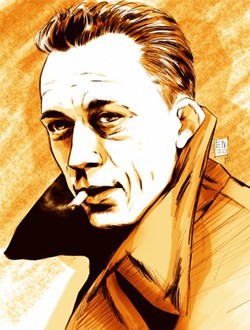 Albert Camus’
Albert Camus’ 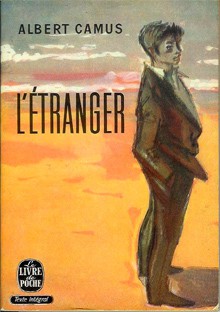 Part of Pascal’s wager is that if we believe in Christianity and turn out to be wrong, we will have lost nothing. Camus disagrees: if we believe in any system of false consolation in the face of death, we will still die, but he will have lost everything — everything real — for we will never have truly lived in the real world around us. Hope for an unreal world deprives us of the real one. So perhaps we should at least try to live without supernatural consolation. But to do that, we must embrace the leveling wind, allowing it to carry away false hopes. We must squarely confront the terrifying contingency and finitude of life. We must let go of our fear of death in order to truly live life. For if we cease to fear death, we should be free of all lesser fears as well, which will give us the freedom to make the most of our lives. But this does not merely allow us to accept death, but to love it as a principle of freedom.
Part of Pascal’s wager is that if we believe in Christianity and turn out to be wrong, we will have lost nothing. Camus disagrees: if we believe in any system of false consolation in the face of death, we will still die, but he will have lost everything — everything real — for we will never have truly lived in the real world around us. Hope for an unreal world deprives us of the real one. So perhaps we should at least try to live without supernatural consolation. But to do that, we must embrace the leveling wind, allowing it to carry away false hopes. We must squarely confront the terrifying contingency and finitude of life. We must let go of our fear of death in order to truly live life. For if we cease to fear death, we should be free of all lesser fears as well, which will give us the freedom to make the most of our lives. But this does not merely allow us to accept death, but to love it as a principle of freedom.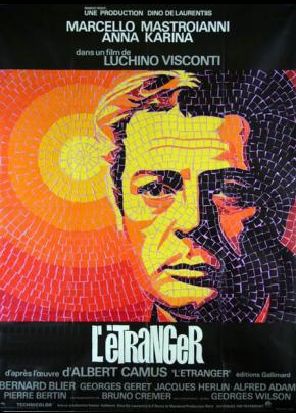 The Stranger ends with defiant, enigmatic words: “For all to be accomplished, for me to be less lonely, all that remained to hope was that on the day of my execution there should be a huge crowd of spectators and that they should greet me with howls of execration.” Why would Meursault be more lonely if his fellow men did not hate him? Because he has embraced his mortality and recognized his kinship with a Godless, aimless universe. He is no longer a stranger to the real world. Thus his estrangement from the unfree, inauthentic human world that condemned him is complete.
The Stranger ends with defiant, enigmatic words: “For all to be accomplished, for me to be less lonely, all that remained to hope was that on the day of my execution there should be a huge crowd of spectators and that they should greet me with howls of execration.” Why would Meursault be more lonely if his fellow men did not hate him? Because he has embraced his mortality and recognized his kinship with a Godless, aimless universe. He is no longer a stranger to the real world. Thus his estrangement from the unfree, inauthentic human world that condemned him is complete.
 del.icio.us
del.icio.us
 Digg
Digg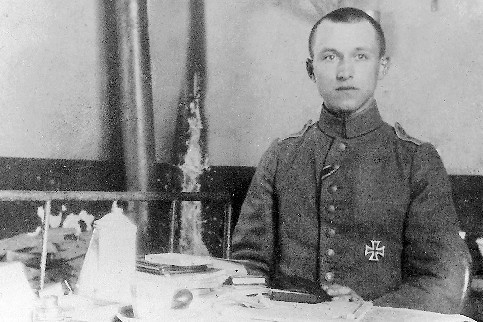 La aventura de Jünger cobra el símbolo de una organicidad rotunda enla relación social del intelectual con la producción de una clase concreta; se trata fundamentalmente de una personalidad que de alguna manera expresa Drieu la Rochelle: ”(es) el hombre de mano comunista, el hombre de las ciudades, neurasténico, excitado por el ejemplo de los fascios italianos, así como por el de los mercenarios de las guerras chinas, de los soldados de la Legión Extranjera” (8). Se verdadera patria son las llamas, la tensión del combate, la experiencia de la guerra. Su conformación íntima se encuentra manifestada en otro de aquellos que vivieron ”la encarnación de una civilización en sus últimas etapas de decadencia y disolución”, así dice Ernst Von Salomon en Los proscritos: ”sufríamos al sentir que en medio del torbellino y pese a todos los acontecimientos, las fatalidades, la verdad y la realidad siempre estaban ausentes” (9). Es este el territorio en que Jünger preparará la red invisible de su obra, recogiendo las brasas, los escombros, las banderas rotas. Cuando todo en Alemania se tambalea: se cimbran los valores humanitarios y cristianos, la burguesía se declara en bancarrota y los espartaquistas establecen la efímera República de Münich, aparecen los elementos vitales de su escritura, que atesorará como una trinchera imbatible heredera del limo, con la llave precisa que abrirá las puertas de la putrefacción a la literatura.
La aventura de Jünger cobra el símbolo de una organicidad rotunda enla relación social del intelectual con la producción de una clase concreta; se trata fundamentalmente de una personalidad que de alguna manera expresa Drieu la Rochelle: ”(es) el hombre de mano comunista, el hombre de las ciudades, neurasténico, excitado por el ejemplo de los fascios italianos, así como por el de los mercenarios de las guerras chinas, de los soldados de la Legión Extranjera” (8). Se verdadera patria son las llamas, la tensión del combate, la experiencia de la guerra. Su conformación íntima se encuentra manifestada en otro de aquellos que vivieron ”la encarnación de una civilización en sus últimas etapas de decadencia y disolución”, así dice Ernst Von Salomon en Los proscritos: ”sufríamos al sentir que en medio del torbellino y pese a todos los acontecimientos, las fatalidades, la verdad y la realidad siempre estaban ausentes” (9). Es este el territorio en que Jünger preparará la red invisible de su obra, recogiendo las brasas, los escombros, las banderas rotas. Cuando todo en Alemania se tambalea: se cimbran los valores humanitarios y cristianos, la burguesía se declara en bancarrota y los espartaquistas establecen la efímera República de Münich, aparecen los elementos vitales de su escritura, que atesorará como una trinchera imbatible heredera del limo, con la llave precisa que abrirá las puertas de la putrefacción a la literatura.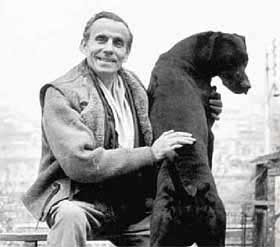 Louis-Ferdinand Céline was the pen name of French novelist, essayist, and physician Louis-Ferdinand-Auguste Destouches, who was born on this day in 1894. Céline is one of the giants of 20th-century literature. And, like Ezra Pound and so many other great writers of the last century, he was an open and unapologetic racial nationalist. For more on Céline, see the following works on this website:
Louis-Ferdinand Céline was the pen name of French novelist, essayist, and physician Louis-Ferdinand-Auguste Destouches, who was born on this day in 1894. Céline is one of the giants of 20th-century literature. And, like Ezra Pound and so many other great writers of the last century, he was an open and unapologetic racial nationalist. For more on Céline, see the following works on this website: 

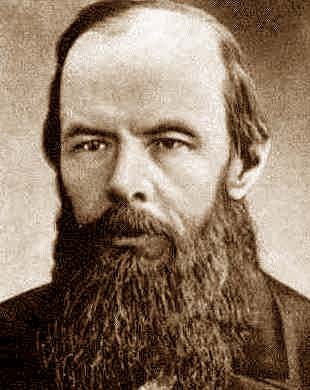 Como es sabido, Tocqueville llegó a predecir que el porvenir del mundo estaría bajo el dominio político de dos grandes potencias, Estados Unidos y Rusia. Desde luego había que ser muy sagaz en asuntos internacionales y un profundo conocedor de las tendencias históricas para profetizar casi siglo y medio antes de que sucediera el condominio del mundo por las dos grandes potencias de la posguerra mundial. Más fácil resulta hoy predecir que el porvenir de Rusia está en Europa y el de Europa en Rusia. Esto quiere decir que, a corto plazo, hablando en términos históricos, el único camino de futuro que se presenta a la encrucijada rusa y a la ruina de la mayor parte de países europeos para mayor gloria de Alemania está en la integración en una magna empresa político-económica europea, que abarque desde Lisboa a Vladivostok.
Como es sabido, Tocqueville llegó a predecir que el porvenir del mundo estaría bajo el dominio político de dos grandes potencias, Estados Unidos y Rusia. Desde luego había que ser muy sagaz en asuntos internacionales y un profundo conocedor de las tendencias históricas para profetizar casi siglo y medio antes de que sucediera el condominio del mundo por las dos grandes potencias de la posguerra mundial. Más fácil resulta hoy predecir que el porvenir de Rusia está en Europa y el de Europa en Rusia. Esto quiere decir que, a corto plazo, hablando en términos históricos, el único camino de futuro que se presenta a la encrucijada rusa y a la ruina de la mayor parte de países europeos para mayor gloria de Alemania está en la integración en una magna empresa político-económica europea, que abarque desde Lisboa a Vladivostok.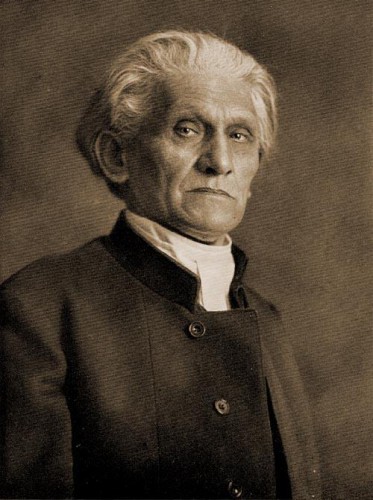

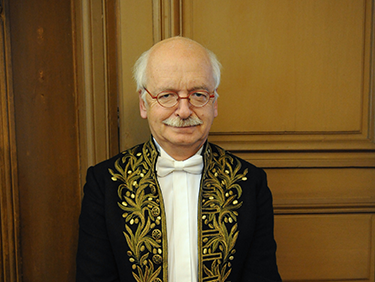
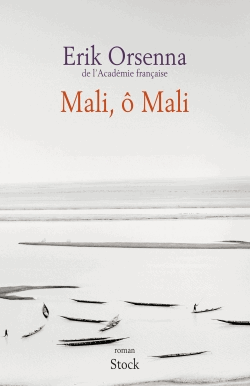 Or le nomadisme est de retour. C’est incontestable. Orsenna a raison et voit juste sur ce point. Le terrorisme islamiste est nomade et s’empare de territoires vastes où ses combattants font du nomadisme. La piraterie, nomadisme des mers est également revenue. Les entreprises qui délocalisent sont nomades, la finance internationale est nomade et surtout le monde de l'internet est par définition un monde nomade. La civilisation sédentaire, quant à elle, doute de ses valeurs.
Or le nomadisme est de retour. C’est incontestable. Orsenna a raison et voit juste sur ce point. Le terrorisme islamiste est nomade et s’empare de territoires vastes où ses combattants font du nomadisme. La piraterie, nomadisme des mers est également revenue. Les entreprises qui délocalisent sont nomades, la finance internationale est nomade et surtout le monde de l'internet est par définition un monde nomade. La civilisation sédentaire, quant à elle, doute de ses valeurs.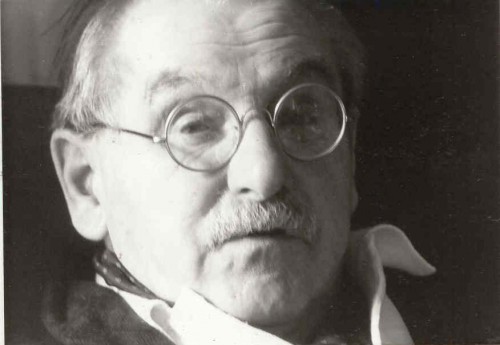

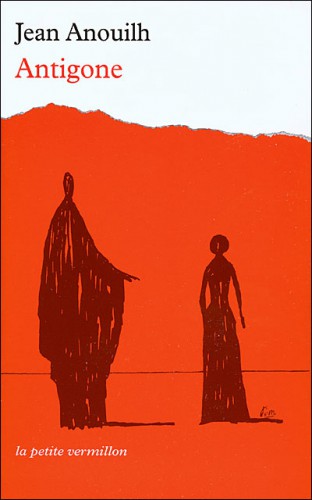 Deux ans plus tard, en 1959, il inaugure la série des « Nouvelles Pièces grinçantes » avec l’Hurluberlu ou le Réactionnaire amoureux, dont le titre constitue en soi une forme de provocation. Cycle qui devait se clore en 1970, avec les Poissons rouges ou Mon père ce héros, réquisitoire sévère et d’apparence cocasse contre une certaine forme de société, faisant allusion à Mai-68, mais aussi à la grande rupture de 1940- 45. Entre-temps, dans ses « Pièces costumées », il aura abordé des sujets historiques qui prouvent une belle maîtrise en la matière : l’Alouette (1953) – sur Jeanne d’Arc –, Becket ou l’Honneur de Dieu (1959) – sur le meurtre, en 1170, de l’archevêque de Cantorbéry –, la Foire d’empoigne (1962) – sur les Cent-Jours. Comédie-ballet, de moeurs ou d’intrigue, farce, drame, comédie ou tragédie, jusqu’à sa mort, en 1987, Anouilh aura touché à tous les genres de théâtre, ce qui ne facilitera pas la tâche des taxinomistes en chaire. S’il revendiquait pour lui-même le qualificatif de « vieux boulevardier indécrottable », c’était en pensant à la tradition italienne de la commedia dell’arte issue des atellanes latines dans le sillage de Molière, son maître. Mais, sous le masque du « vieux boulevardier », Anouilh révèle également une figure de jeune insoumis. Sensibilité inquiète et libertaire, révolté de l’intérieur à l’image de ses personnages féminins, Anouilh prône une insurrection des âmes contre la médiocrité, la banalité et la duplicité. Une insurrection tout aristocratique qui prend pour cible les lieux communs du progressisme sous toutes ses formes (égalitarisme, démocratisme, relativisme, etc.) et le range définitivement du côté des réactionnaires invétérés.
Deux ans plus tard, en 1959, il inaugure la série des « Nouvelles Pièces grinçantes » avec l’Hurluberlu ou le Réactionnaire amoureux, dont le titre constitue en soi une forme de provocation. Cycle qui devait se clore en 1970, avec les Poissons rouges ou Mon père ce héros, réquisitoire sévère et d’apparence cocasse contre une certaine forme de société, faisant allusion à Mai-68, mais aussi à la grande rupture de 1940- 45. Entre-temps, dans ses « Pièces costumées », il aura abordé des sujets historiques qui prouvent une belle maîtrise en la matière : l’Alouette (1953) – sur Jeanne d’Arc –, Becket ou l’Honneur de Dieu (1959) – sur le meurtre, en 1170, de l’archevêque de Cantorbéry –, la Foire d’empoigne (1962) – sur les Cent-Jours. Comédie-ballet, de moeurs ou d’intrigue, farce, drame, comédie ou tragédie, jusqu’à sa mort, en 1987, Anouilh aura touché à tous les genres de théâtre, ce qui ne facilitera pas la tâche des taxinomistes en chaire. S’il revendiquait pour lui-même le qualificatif de « vieux boulevardier indécrottable », c’était en pensant à la tradition italienne de la commedia dell’arte issue des atellanes latines dans le sillage de Molière, son maître. Mais, sous le masque du « vieux boulevardier », Anouilh révèle également une figure de jeune insoumis. Sensibilité inquiète et libertaire, révolté de l’intérieur à l’image de ses personnages féminins, Anouilh prône une insurrection des âmes contre la médiocrité, la banalité et la duplicité. Une insurrection tout aristocratique qui prend pour cible les lieux communs du progressisme sous toutes ses formes (égalitarisme, démocratisme, relativisme, etc.) et le range définitivement du côté des réactionnaires invétérés. 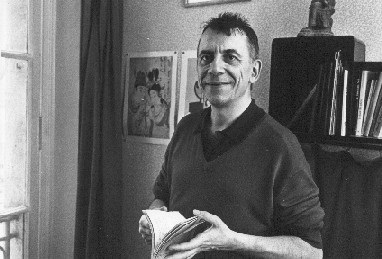
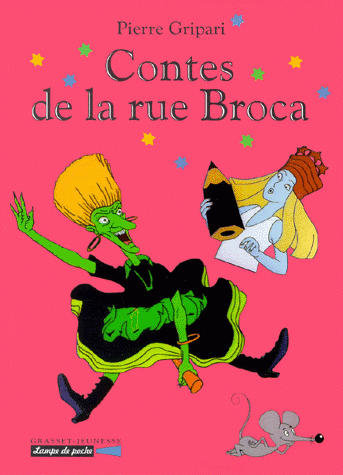 Dans l’excellent petit ouvrage qu’ils viennent de lui consacrer, à l’occasion du vingtième anniversaire de sa disparition, Anne Martin-Conrad et Jacques Marlaud nous rappellent quel homme étrange il fut, lui qui mena une vie ascétique de vieux garçon dans de modestes meublés sans confort, moitié Diogène des temps modernes vivant dans un tonneau sommairement aménagé, moitié franciscain parlant d’égal à égal à frère Martien et soeur Sorcière. C’est là qu’il vivait, dans un dénuement heureux, avec une table en Formica, pour prendre de frugaux repas, écrire et rêver, habillé comme un chiffonnier d’Emmaüs de chandails mités et de chemises qui sortaient du pantalon, toujours en espadrilles, été comme hiver, comme échappé d’un film de Jacques Tati, animal pataud habité par la grâce des poètes, dont le sourire désarmait les douaniers et les enfants.
Dans l’excellent petit ouvrage qu’ils viennent de lui consacrer, à l’occasion du vingtième anniversaire de sa disparition, Anne Martin-Conrad et Jacques Marlaud nous rappellent quel homme étrange il fut, lui qui mena une vie ascétique de vieux garçon dans de modestes meublés sans confort, moitié Diogène des temps modernes vivant dans un tonneau sommairement aménagé, moitié franciscain parlant d’égal à égal à frère Martien et soeur Sorcière. C’est là qu’il vivait, dans un dénuement heureux, avec une table en Formica, pour prendre de frugaux repas, écrire et rêver, habillé comme un chiffonnier d’Emmaüs de chandails mités et de chemises qui sortaient du pantalon, toujours en espadrilles, été comme hiver, comme échappé d’un film de Jacques Tati, animal pataud habité par la grâce des poètes, dont le sourire désarmait les douaniers et les enfants. 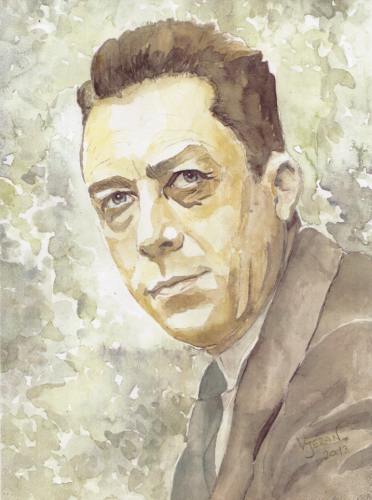
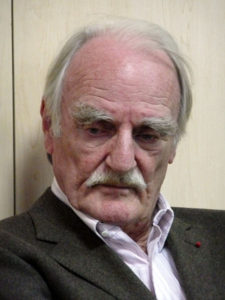
 È vero che anche in Francia, all’inizio, Il campo dei santi era stato accolto piuttosto in sordina; maggiore riscontro aveva avuto, chi sa perché, negli Stati Uniti; poi, però, poco a poco, ma irresistibilmente, il libro era stato richiesto, ristampato, venduto, anno dopo anno, fino a raggiungere una tiratura che, oggi, si calcola in mezzo milione di copie. Sarà perché i fatti gli hanno dato clamorosamente ragione; oppure perché, in Francia, un autore di valore, magari tardi, alla fine salta fuori; da noi, complice l’egemonia culturale della sinistra neo-marxista (anche se essa non si considera più tale), comprendente anche buona parte del mondo cattolico (che, del pari, ignora questo debito ideologico, almeno in apparenza), e l’inconsistenza intellettuale, e non solo intellettuale, della destra, è possibile, possibilissimo, che scrittori e filosofi eminenti restino sepolti, ignorati o dimenticati, a tempo indeterminato, anche dopo che nel resto del mondo si sono definitivamente affermati: un fenomeno, in verità, tutt’altro che recente, ma anzi tipico della nostra Repubblica letteraria, almeno a partire dal secondo dopoguerra – ma per molti aspetti, ancora più antico, e perfino anteriore al fascismo.
È vero che anche in Francia, all’inizio, Il campo dei santi era stato accolto piuttosto in sordina; maggiore riscontro aveva avuto, chi sa perché, negli Stati Uniti; poi, però, poco a poco, ma irresistibilmente, il libro era stato richiesto, ristampato, venduto, anno dopo anno, fino a raggiungere una tiratura che, oggi, si calcola in mezzo milione di copie. Sarà perché i fatti gli hanno dato clamorosamente ragione; oppure perché, in Francia, un autore di valore, magari tardi, alla fine salta fuori; da noi, complice l’egemonia culturale della sinistra neo-marxista (anche se essa non si considera più tale), comprendente anche buona parte del mondo cattolico (che, del pari, ignora questo debito ideologico, almeno in apparenza), e l’inconsistenza intellettuale, e non solo intellettuale, della destra, è possibile, possibilissimo, che scrittori e filosofi eminenti restino sepolti, ignorati o dimenticati, a tempo indeterminato, anche dopo che nel resto del mondo si sono definitivamente affermati: un fenomeno, in verità, tutt’altro che recente, ma anzi tipico della nostra Repubblica letteraria, almeno a partire dal secondo dopoguerra – ma per molti aspetti, ancora più antico, e perfino anteriore al fascismo.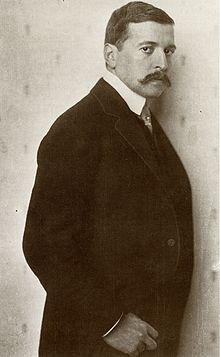 Je reste stupéfié par la maturité dont témoigne le jeune Hugo von Hofmannsthal dans ses lettres à un officier de marine (du nom d’Edgar Karg) intitulées Les mots ne sont pas de ce monde (Rivages poche, dans l’excellente collection Petite Bibliothèque), où j’ai cru reconnaître quelques-unes des plus belles intuitions d’un autre jeune prodige, Carlo Michelstaedter.
Je reste stupéfié par la maturité dont témoigne le jeune Hugo von Hofmannsthal dans ses lettres à un officier de marine (du nom d’Edgar Karg) intitulées Les mots ne sont pas de ce monde (Rivages poche, dans l’excellente collection Petite Bibliothèque), où j’ai cru reconnaître quelques-unes des plus belles intuitions d’un autre jeune prodige, Carlo Michelstaedter. 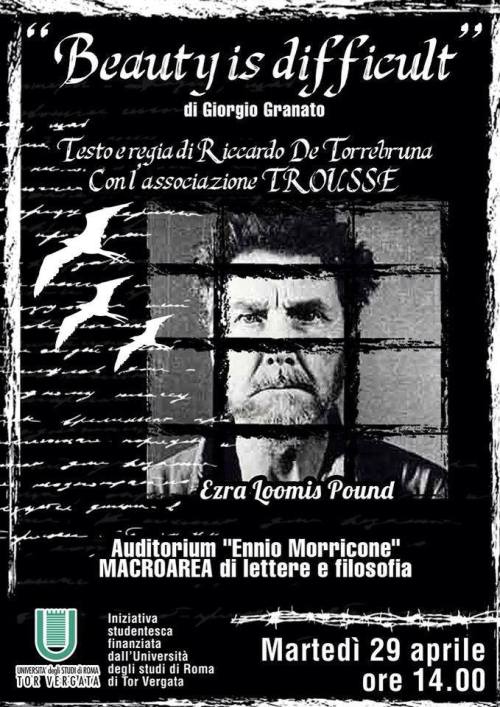



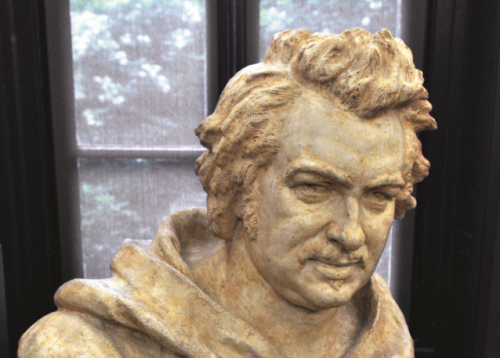


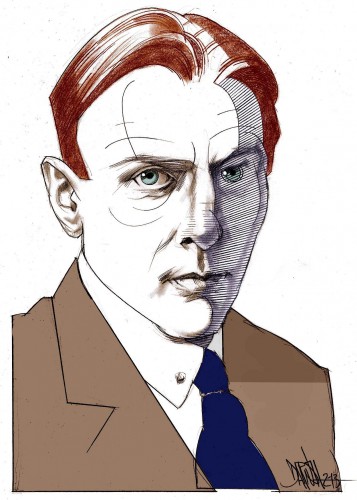
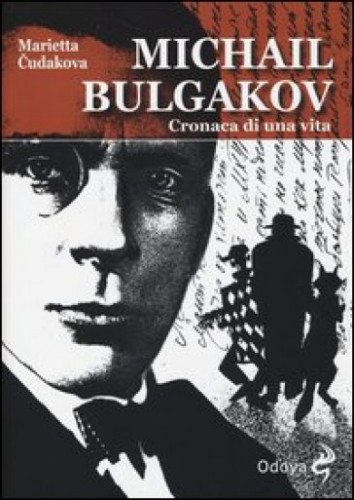 Se la storia della letteratura russa prodotta in età sovietica, e soprattutto durante l’era di Stalin, è già di per sé drammatica, la lettura dell’opera di Marietta Čudakova dedicata alla biografia di Michail Afanas’evič Bulgakov può risultare addirittura straziante.
Se la storia della letteratura russa prodotta in età sovietica, e soprattutto durante l’era di Stalin, è già di per sé drammatica, la lettura dell’opera di Marietta Čudakova dedicata alla biografia di Michail Afanas’evič Bulgakov può risultare addirittura straziante.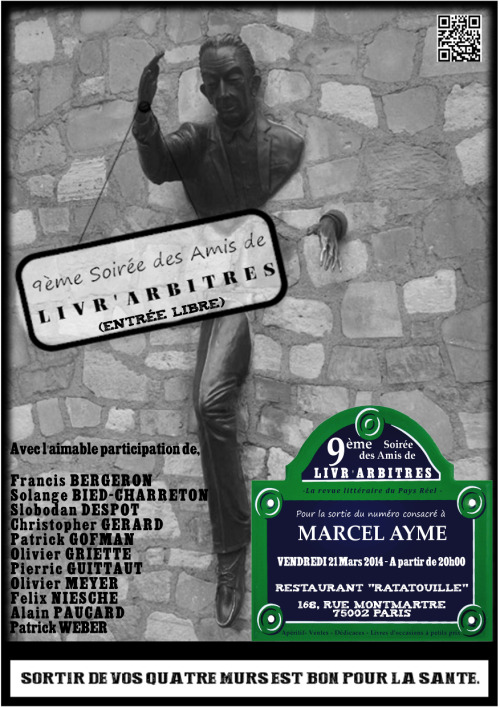

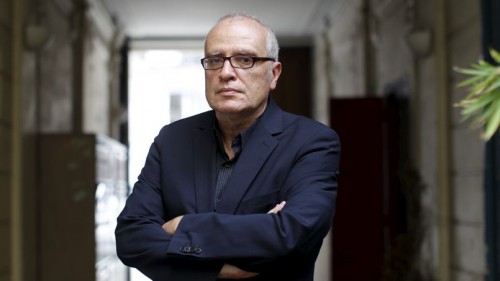

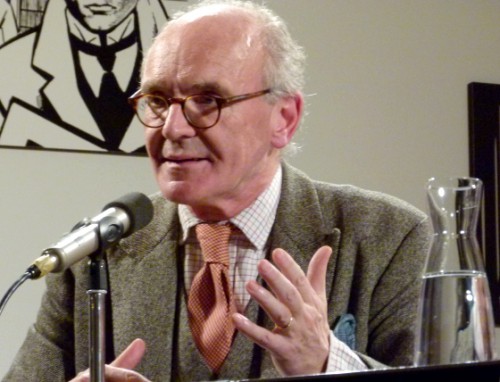
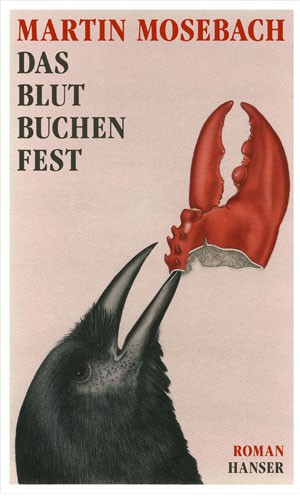 Der Lyriker Paul Valéry hatte die Romanschreiberei einmal damit lächerlich gemacht, es sei für ihn unvorstellbar, einen trivialen Satz zu schreiben wie »Die Marquise ging um fünf Uhr aus«. Es war die Zeit, als die Rede von der »Krise des Romans« populär war. Die Wirklichkeit sei zu komplex geworden, hieß es. Neue Medien seien besser geeignet, die Realität einzufangen. Auch könne die Sprache, derer ein Roman bedürfe, kaum mithalten in einer Welt transzendentaler Obdachlosigkeit.
Der Lyriker Paul Valéry hatte die Romanschreiberei einmal damit lächerlich gemacht, es sei für ihn unvorstellbar, einen trivialen Satz zu schreiben wie »Die Marquise ging um fünf Uhr aus«. Es war die Zeit, als die Rede von der »Krise des Romans« populär war. Die Wirklichkeit sei zu komplex geworden, hieß es. Neue Medien seien besser geeignet, die Realität einzufangen. Auch könne die Sprache, derer ein Roman bedürfe, kaum mithalten in einer Welt transzendentaler Obdachlosigkeit.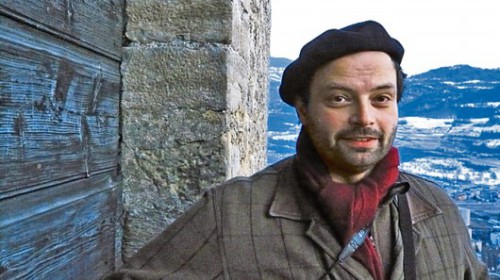
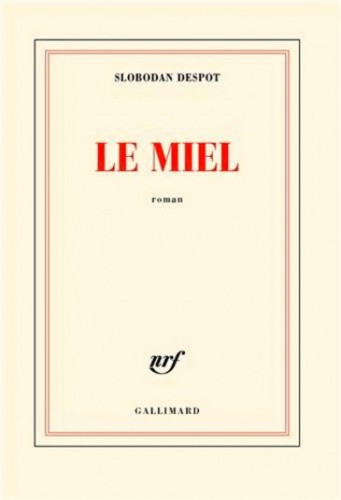
Ernst Jünger: yo soy la acción
por José Luis Ontiveros
Ex: http://culturatransversal.wordpress.com
En torno a la obra del escritor alemán Ernst Jünger se ha producido una polémica semejante a la que preocupó a los teólogos españoles en relación con la existencia del alma de los indios. De alguna manera, el hecho de que se le haya discutido en medios intelectuales mundiales con asiduidad, y el que una nueva política literaria tienda a revalorizarlo, le otorga, como lo hizo a los naturales el Papa Paulo III, la posibilidad de una lectura conversa; ya no traumatizada por su historia maldita, absolutoria de su derecho a la diferencia, y exoneradora de un pasado marcado por la gloria y la inmundicia.